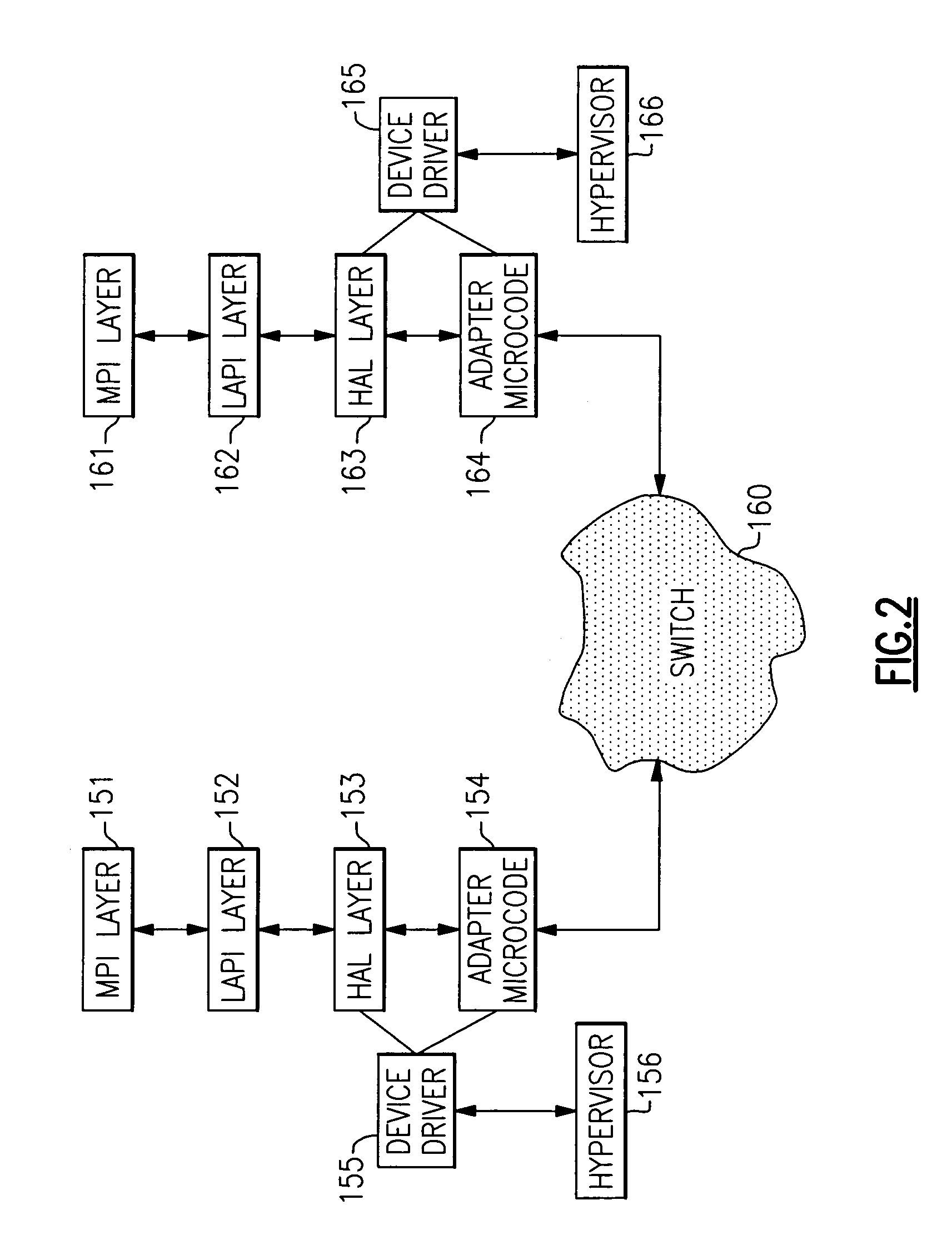Method for third party, broadcast, multicast and conditional RDMA operations
a technology of applied in the field of third-party, broadcasting multicast and conditional rdma operations, can solve the problems of bogging down adapter operation, data packets sent over the communication fabric, and no mechanism in existing rdma transport mechanisms to accept out-of-order packet delivery
- Summary
- Abstract
- Description
- Claims
- Application Information
AI Technical Summary
Benefits of technology
Problems solved by technology
Method used
Image
Examples
Embodiment Construction
[0078]In order to provide a more understandable description of the structure and operation of the present invention, it is useful to first describe some of the components that exist in the environment in which the invention is typically embodied. This environment includes at least two data processing systems capable of Remote Direct Memory Addressing (RDMA) operations. Each data processing system communicates to any other coupled data processing system through a switch (also termed herein a network, fabric or communications fabric). The switches hook up to the nodes via a switch adapter. Each data processing system includes one or more nodes which in turn may include one or more independently operating Central Processing Units (CPUs). Each data processing system communicates with the switch by means of a switch adapter. These adapters, such as those present in the pSeries of products offered by the assignee of the present invention, include their own memory for storage and queuing o...
PUM
 Login to View More
Login to View More Abstract
Description
Claims
Application Information
 Login to View More
Login to View More - R&D
- Intellectual Property
- Life Sciences
- Materials
- Tech Scout
- Unparalleled Data Quality
- Higher Quality Content
- 60% Fewer Hallucinations
Browse by: Latest US Patents, China's latest patents, Technical Efficacy Thesaurus, Application Domain, Technology Topic, Popular Technical Reports.
© 2025 PatSnap. All rights reserved.Legal|Privacy policy|Modern Slavery Act Transparency Statement|Sitemap|About US| Contact US: help@patsnap.com



